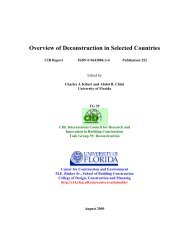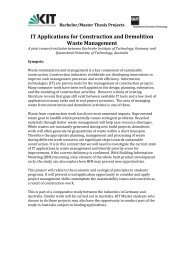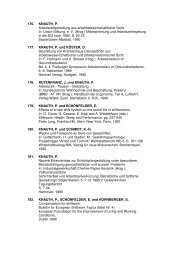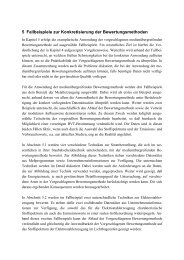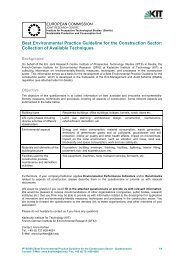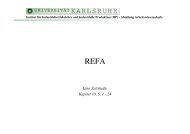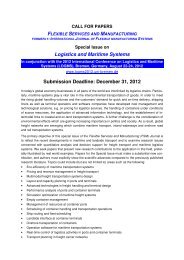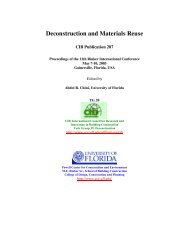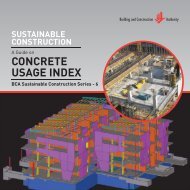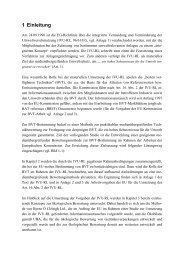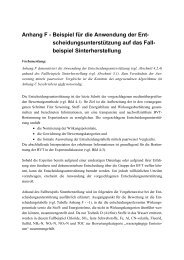Waste reduction final report -4 - Test Input
Waste reduction final report -4 - Test Input
Waste reduction final report -4 - Test Input
Create successful ePaper yourself
Turn your PDF publications into a flip-book with our unique Google optimized e-Paper software.
• conduct an audit of the waste that will be generated by the project and prepare a<br />
written waste audit <strong>report</strong>;<br />
• based on the audit, prepare a written waste <strong>reduction</strong> plan that includes source<br />
separation (recycling) programs for materials such as wood, steel, concrete and bricks<br />
before the project begins;<br />
• implement the waste <strong>reduction</strong> work plan;<br />
• include measures for communicating the plan to workers at the project site;<br />
• retain a copy of the audit and work plan documents on file for five years from<br />
completion of the project.<br />
Regulation 103/94 requires source separation (recycling) programs for specified wastes:<br />
• implement a source separation program for the reusable and recyclable materials<br />
listed in Regulation 102/94;<br />
• specify facilities that are sufficient for the collection, sorting, handling and storage of<br />
these materials;<br />
• communicate the source separation program and its successes to employees, patrons,<br />
and tenants;<br />
• make reasonable effort to ensure that the separated waste is reused or recycled.<br />
Material to be recycled by establishments designated under Ontario’s 3Rs Regulations<br />
include: cardboard, brick, concrete, drywall (gypsum board), steel and wood.<br />
Various <strong>report</strong>s have commented on a consistent lack of enforcement of CRD waste<br />
management regulations in Ontario. Inspections by the Ministry of Environment in 2006<br />
revealed that more than 90 per cent of industrial, commercial and institutional (ICI) groups<br />
were out of compliance with the Ontario Regulation 102/94 and 103/94 12 and a 2010 reort by<br />
the Auditor General states that “the Ministry has little assurance that the regulations are being<br />
complied with” 13 . Although a waste audit and plan must be prepared there is no requirement<br />
to submit it anywhere and non-compliance does not lead to any financial penalty. There is a<br />
lack of awareness of the regulations, an ineffective inspection process, and lack of<br />
information. Conversely the Ontario <strong>Waste</strong> Management Association (the association that<br />
represents private-sector waste management companies), estimates that the cost of disposing<br />
waste in a landfill is about 40% lower than the cost of recycling, creating disincentives to<br />
recycle.<br />
However, the recent focus on waste diversion resulting from the 60% diversion target in<br />
Ontario (and Quebec), and the increased concerns about waste disposal, as well as the impact<br />
the sustainable building concerns and the LEED green building rating have led to more<br />
efforts at enforcement. At this stage it is unclear what affect this is having.<br />
The situation in other Canadian provinces varies. Some provinces have little or no regulations<br />
regarding CRD waste management. Others such as British Columbia and Nova Scotia have<br />
higher ICI waste diversion rates than Ontario due to more creative diversion programs. Both<br />
12 Baker, B. (2007, March 17). ICI: clean up your act; Michigan move to ban Ontario trash worrisome. Daily<br />
Commercial News<br />
http://dcnonl.com/article/id20429&search_term=ICI%20clean%20up%20your%20act<br />
13 2010 Auditor General’s Report, Section 3.09, p. 213 http://69.164.72.173/en/<strong>report</strong>s_en/en10/309en10.pdf<br />
15



